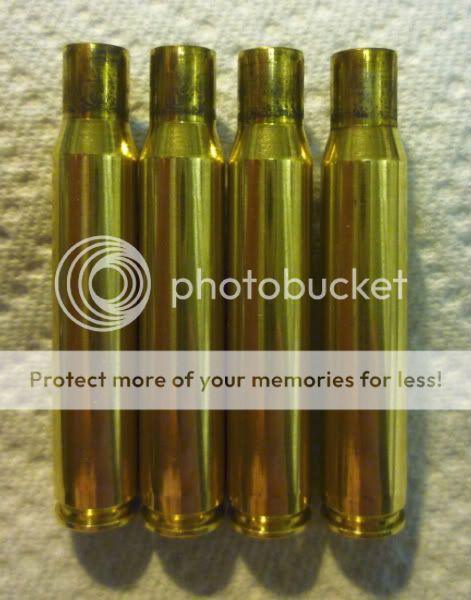OK, I got updates...
Below 650 is no-man's land. The lead DOES cools substanially when you put a case in it, and below 650 I am finding that the lead has a tendency to solidify inside of the case (30 cal). I am thinking that it is doing this because there is enough space for the lead to cool inside of the case AND not reheat to melting temp inside at below this temperaure (i.e., the brass is insulating the lead inside the case from the hotter molten lead on the outside). Dunno if it will happen with smaller volumed cases, but it is something to be aware of and avoid. I have 9 fire formed and stress-relieved cases that I have to drill lead plugs out of, and that sucks. So the recommendation for a full pot of lead to keep the heat consistent has now been tested and found to be sound (duh).
Second, the anneal lines are the opposite of what we are used to seeing - the brass is shinier where it was dipped in the lead. I am susepcting that the oil is doing its thing and causing this. It proved to be fairly handy as I could get a firm guage on how deep each case was dipped, which greatly helped consistency.
On my 30-06 cases I dipped about 1/8" or so past the shoulder for 20 seconds (used a stopwatch). NO lead adhered to the brass. Temp was 709 - 650. Those that went below temp or were rushed in some way got lead plugs. I have bumped the shoulders and neck sized - the tension is back to where it needs to be so far and NONE of the cases were overdone. So far, so good. Will finish up some prep tonight hopefully and seat bullets tomorrow. So far though, they are better than they were than when we started (6x fired, never been annealed/stress relieved).
This is somewhat of a time consuming process, but I am also able to identify the values/ value ranges where things need to be, record them and repeat/tweak them.
So there you go, FWIW.
Below 650 is no-man's land. The lead DOES cools substanially when you put a case in it, and below 650 I am finding that the lead has a tendency to solidify inside of the case (30 cal). I am thinking that it is doing this because there is enough space for the lead to cool inside of the case AND not reheat to melting temp inside at below this temperaure (i.e., the brass is insulating the lead inside the case from the hotter molten lead on the outside). Dunno if it will happen with smaller volumed cases, but it is something to be aware of and avoid. I have 9 fire formed and stress-relieved cases that I have to drill lead plugs out of, and that sucks. So the recommendation for a full pot of lead to keep the heat consistent has now been tested and found to be sound (duh).
Second, the anneal lines are the opposite of what we are used to seeing - the brass is shinier where it was dipped in the lead. I am susepcting that the oil is doing its thing and causing this. It proved to be fairly handy as I could get a firm guage on how deep each case was dipped, which greatly helped consistency.
On my 30-06 cases I dipped about 1/8" or so past the shoulder for 20 seconds (used a stopwatch). NO lead adhered to the brass. Temp was 709 - 650. Those that went below temp or were rushed in some way got lead plugs. I have bumped the shoulders and neck sized - the tension is back to where it needs to be so far and NONE of the cases were overdone. So far, so good. Will finish up some prep tonight hopefully and seat bullets tomorrow. So far though, they are better than they were than when we started (6x fired, never been annealed/stress relieved).
This is somewhat of a time consuming process, but I am also able to identify the values/ value ranges where things need to be, record them and repeat/tweak them.
So there you go, FWIW.
Last edited:



